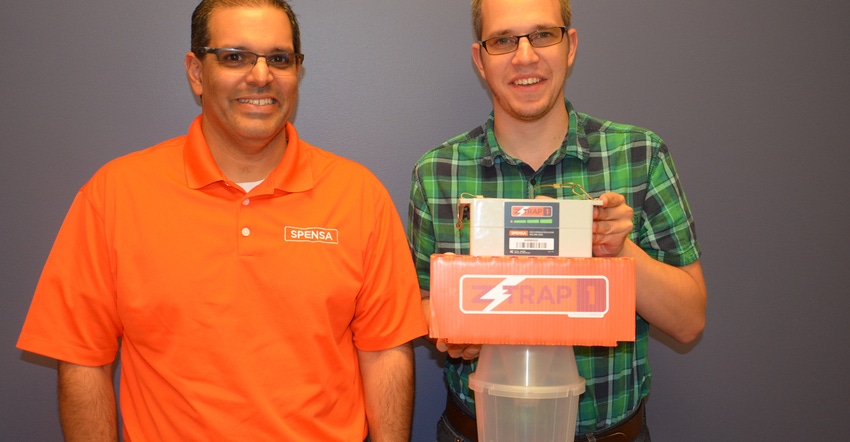
What was once a dream, then an idea and ultimately, a product of research, is the basis for a modern-day company. Spensa Technologies, started in West Lafayette, Ind., by a Purdue University professor in 2009, produces “smart traps” for insect monitoring that take insect management to a whole new level.
Spensa means “storehouse” in Latin, and the idea was to develop technology that could help farmers put more grain in storehouses, according to the company website. “Our primary product so far has been the Z-Trap 1,” says Chad Aeschliman, director of engineering for Spensa Technologies. New this year is Sentinel, a trap that uses a camera to help zero in on the types of moths and insects collected.
Simple concept
A simple idea is the basis of integrated pest management, says Mike True, customer success manager with Spensa. Collect moths of various potentially harmful insects as they arrive in the spring, and use the information to predict when specific insects may hatch into destructive larvae and begin feeding on crops. If insect activity gets intense enough and crosses an economic threshold based on multiple factors, spray and control the pest, preventing economic loss.
“What we’ve done is make reporting of findings nearly real-time with the Z-Trap 1,” Aeschliman says. Patented technology helps the trap detect the presence of target insects, he notes. Then a cellular transmitter reports data from the GPS-enabled trap to a data collection point. Spensa also developed software to handle receiving and organizing information.
Trapping moths with pheromone traps to help determine buildup of moths has been a cornerstone of IPM for decades. What’s new is the ability to deliver the information from the field in near-real time, without hiring someone to physically travel and inspect each trap, True says. It allows more traps to be placed since they don’t have to be checked by hand, and enables a farmer or crops consultant to get data in their hands faster.
Network project
Spensa partnered with Spectrum Premium Non-GMO Seed Corn in 2017 to set up a network of traps throughout Indiana and other key states which Spectrum serves. Nearly 400 traps were placed in farm fields. Target insects included European corn borer, western bean cutworm and earworm, depending upon where traps were placed.
About 100 of the traps were a prototype equipped with a camera, now offered as the Sentinel trap. “The camera image lets us see what was actually collected, and makes it easier to know which insect pests were caught,” Aeschliman says.
While Spensa traps are used by a variety of operations, including orchards and other specialty crop growers, using them to detect appearance of moths for farmers growing non-GMO corn without insect protection makes sense, True says.
“One thing that was driven home last year was that even though the traps collect moths and detect trends, you still need someone on the ground verifying when and where insects are appearing,” True says. “The technology makes that process much more efficient. You know when and where to send scouts.”
About the Author(s)
You May Also Like




